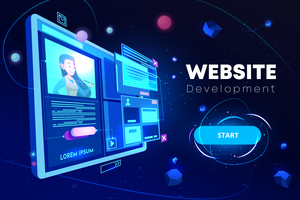Latest Trends in Web Design: Balancing Innovation and User Experience
الجسم
In the fast-paced world of web design, staying up-to-date with the latest trends is crucial for creating websites that not only look great but also provide an exceptional user experience. Balancing innovation with user experience is the key to creating successful websites that engage visitors and drive results. Let's explore some of the latest trends in web design and how they strike this balance:
Latest Trends in Web Design:
-
Dark Mode: Dark mode has gained popularity in recent years, offering a sleek and modern look while reducing eye strain, especially in low-light environments. It's essential to consider accessibility when implementing dark mode, ensuring that text remains readable and contrasts well with the background.
-
Minimalism: Minimalist design continues to be a dominant trend, focusing on simplicity and clean aesthetics. By eliminating clutter and unnecessary elements, minimalist websites provide a streamlined user experience that emphasizes content and functionality.
-
Responsive Design: With the increasing use of mobile devices, responsive design is more important than ever. Websites should adapt seamlessly to different screen sizes and resolutions, ensuring a consistent and user-friendly experience across all devices.
-
Microinteractions: Microinteractions are subtle animations or feedback loops that enhance user engagement and provide feedback. From button hover effects to loading animations, these small details can make a big difference in user experience.
-
Illustrations and Custom Graphics: Custom illustrations and graphics add personality and visual interest to websites, helping brands stand out and communicate their unique identity. Whether it's hand-drawn illustrations or vector graphics, custom visuals can create a memorable impression on visitors.
-
Accessibility: Accessibility is an increasingly important aspect of web design, ensuring that websites are usable by people of all abilities. This includes providing alternative text for images, using semantic HTML markup, and designing with keyboard navigation in mind.
-
Bold Typography: Large, bold typography makes a statement and draws attention to key messages and headlines. By choosing unique fonts and experimenting with typography, designers can create visually striking websites that leave a lasting impression.
-
Interactive Experiences: Interactive elements such as quizzes, surveys, and interactive storytelling engage visitors and encourage them to explore further. By incorporating interactive features, websites can provide a more immersive and memorable experience for users.
-
Video Backgrounds: Video backgrounds add visual interest and captivate visitors' attention, making them popular among web designers. However, it's essential to ensure that videos are optimized for performance and don't detract from the overall user experience.
-
Voice User Interfaces (VUI): With the rise of voice assistants and smart speakers, voice user interfaces are becoming increasingly prevalent in web design. Integrating voice commands and interactions can enhance accessibility and provide a convenient alternative for users.
-
Augmented Reality (AR) and Virtual Reality (VR): AR and VR technologies are revolutionizing the way users interact with websites, offering immersive experiences that blur the line between the digital and physical worlds. While still emerging, AR and VR have the potential to transform web design in exciting ways.
-
Data Privacy and Security: In light of growing concerns about data privacy and security, web designers must prioritize user privacy and implement robust security measures. This includes using HTTPS encryption, implementing secure login systems, and complying with data protection regulations such as GDPR.
Striking the Balance:
Incorporating these latest trends in web design is essential for staying relevant and competitive in today's digital landscape. However, it's equally important to prioritize user experience and ensure that innovations enhance rather than detract from usability. By striking the right balance between innovation and user experience, web designers can create websites that not only look great but also provide a seamless and enjoyable experience for visitors.
As technology continues to evolve, staying informed about the latest trends and best practices in web design is essential for success. By embracing innovation while keeping user experience top of mind, designers can create websites that delight users, drive engagement, and ultimately achieve their goals.












تعليقات